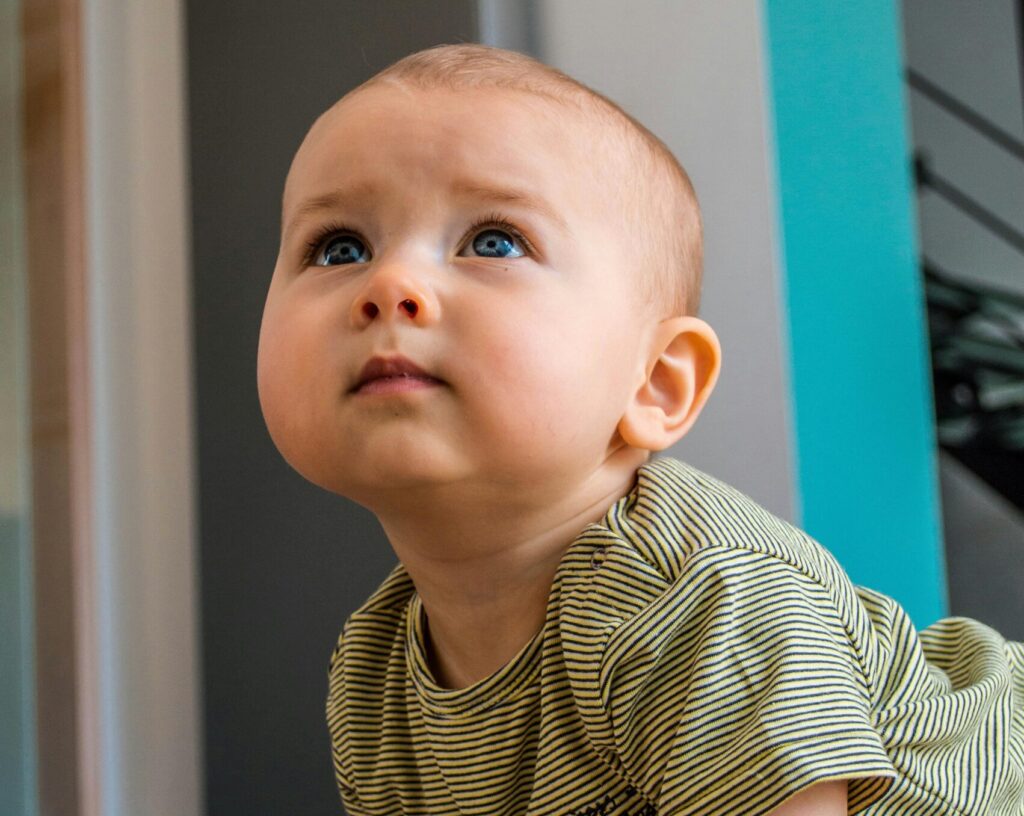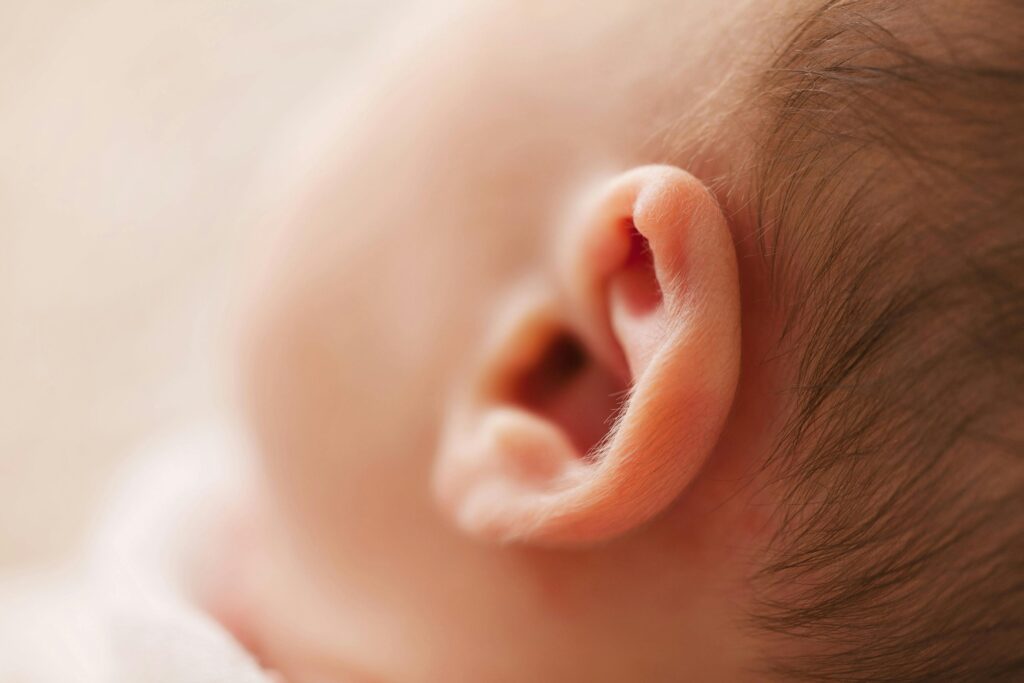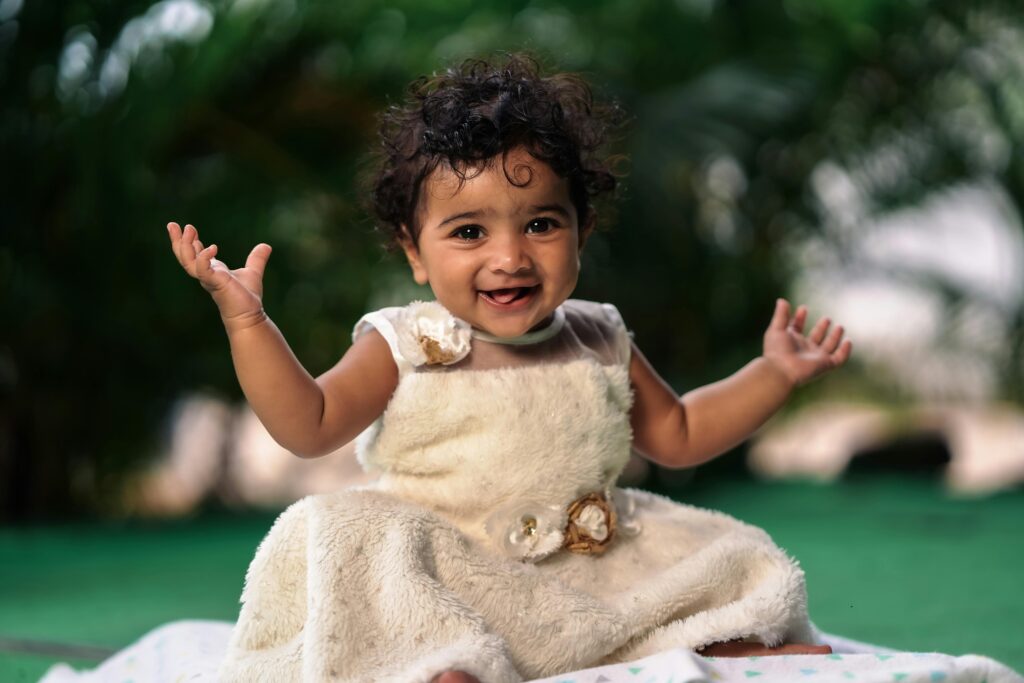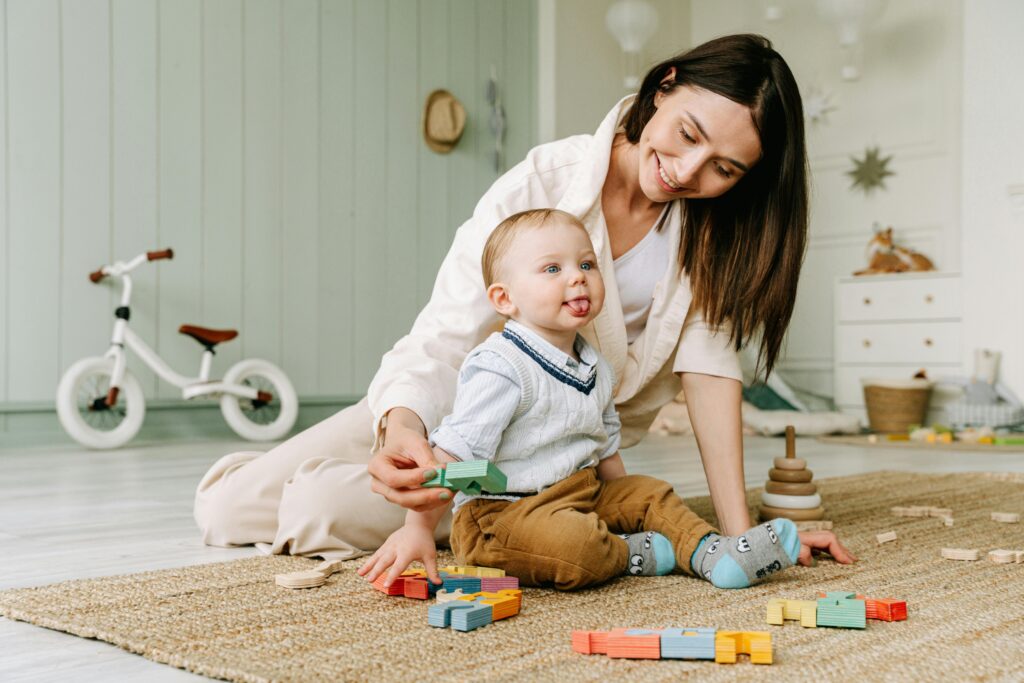Taking care of a newborn is a demanding job that calls for patience and close attention to detail. What to do if water goes in your baby’s ears during a bath, a swim, or just a simple splash is a common worry for new parents. Although this is normally not harmful, if left untreated, it can occasionally cause pain or even ear infections. Being prepared for such eventualities will reduce anxiety and preserve the health of your baby’s ears. In order to protect your child’s safety and wellbeing, this thorough guide will go over the possible risks, protective measures, and what to do if water does get into your baby’s ears.
The Ear’s Structure in a Baby
It’s important to know the fundamentals of ear anatomy in order to appreciate why water in a baby’s ear might be a problem. The outer ear, middle ear, and inner ear are the three components that make up the ear. The eardrum, which divides the outer ear from the middle ear, is reached by the ear canal and pinna, which are parts of the outer ear. Tiny bones in the middle ear carry sound waves to the inner ear, where the auditory nerve relays messages to the brain.
Compared to adults, babies’ ear canals are shorter and more horizontal, which can facilitate the trapping of water. Due to this structural variation, managing water exposure requires extra caution and attention. Infants are also more prone to infections and fluid buildup due to their more horizontal eustachian tube and less effective fluid drainage system.
Knowing the structure of your baby’s ears can make it easier for you to understand why specific treatments and preventative actions are required. It also stresses how crucial it is to handle their ears carefully and gently in order to prevent harm or pain.

Possible Dangers of Water in a Baby’s Ears
Although having water in the ears is usually not harmful, problems can arise from time to time. Parents who are aware of these risks will be better able to take the necessary precautions and respond quickly when needed.
Ear Infections
An ear infection is the most frequent risk connected to water in a baby’s ear. Otitis externa, also referred to as swimmer’s ear, is an outer ear canal infection brought on by fungus or bacteria. It frequently happens when water becomes stuck in the ear canal, producing a damp environment that encourages the growth of microorganisms. Otitis externa is characterized by ear pain, swelling, redness, and itching.
Particularly if the water in the ear canal is contaminated, the moist environment there can turn into a haven for bacteria and fungi. Because of this, it’s crucial to make sure the water your infant comes into contact with—whether bathing or swimming—is safe and clean.
Middle Ear Infections
Otitis media, an infection beneath the eardrum, can also result from water getting into the middle ear. Otitis media can be more serious, producing significant discomfort and need medical attention, even though it is less prevalent than outer ear infections. This kind of infection is more common in cases when the eustachian tube, which helps to equalize pressure by connecting the middle ear to the back of the throat, is already perforated or malfunctioning.
Due to their potential to impair balance and hearing, middle ear infections are especially dangerous. In extreme situations, they could result in consequences like a burst eardrum or ongoing ear issues. It is vital to keep an eye out for any infection-related symptoms and to get medical help as soon as possible.
Pain and Hearing Problems
Water trapped in the ear can cause temporary discomfort and hearing impairments in newborns, even in the absence of an infection. They might tug at their ears, show indications of impatience, or alter their resting and eating schedules. When a baby feels like they have water in their ears, it can be uncomfortable and cause fussiness and sleep disturbances.
Sometimes, water in the ear can temporarily impair hearing, which can have an impact on how the baby reacts to noises and engages with their surroundings. This can be especially problematic during crucial developmental phases when language and cognitive development depend on auditory input.

Preventative Measures
An infant’s risk of infection and discomfort can be decreased by keeping water out of their ears. The following are doable actions that parents can take:
Use ear covers or earplugs
It is possible to use infant-specific earplugs or ear coverings when bathing or swimming. By creating a seal, these devices stop water from getting inside the ear canal. Make sure the earplugs or covers are the right size and fit the baby snugly without becoming uncomfortable.
Soft silicone or moldable wax earplugs are especially useful since they fit the contours of the ear. To guarantee comfort and safety, it’s crucial to select items made especially for newborns. To avoid choking concerns, always keep an eye on your infant when they are wearing earplugs.
Appropriate Bathing Methods
Try to keep your baby’s head above water when giving them a bath. Rinse their hair gently with a washcloth or a cup, making sure the water runs out of their ears. Use a bath chair or other support that keeps the head raised for very young babies.
The chance of water getting in your ears can also be reduced by using a soft stream of water and being careful not to splash. Try to control water play if your baby likes to play in the bathtub to cut down on excessive splashing. It’s also crucial to pay attention to the water’s temperature since really warm water might dissolve earwax and facilitate the passage of water through the ear canal.
Drying Off Ears Completely
Use a gentle cloth to pat dry your baby’s ears after they have been exposed to water. To aid in the release of any trapped water, tilt their head to each side. To prevent harm or to drive water farther inside the ear canal, do not enter anything, not even cotton swabs, into the canal.
Another option for removing moisture from the outer ear is to use a fresh, dry towel or tissue. Allow your baby to lie on their side with the afflicted ear facing down to promote natural drainage if you observe any water inside the ear. It is possible to use mild ear drops to help remove water from ears, but only after speaking with a pediatrician.
Routine Ear Exams
A pediatrician’s routine examinations can help keep an eye on your child’s ear health. Consult your doctor about treatment choices and prevention measures if you fear water has entered your baby’s ears or if they have a history of ear infections.
Frequent check-ups with the doctor can help detect any early indications of ear issues and guarantee prompt treatment. Additionally, based on the particular needs and medical history of your child, your physician can offer tailored guidance. Developing successful preventive tactics might be aided by keeping track of any recurrent ear concerns and talking about them throughout visits.

What to Do If Water Gets Into Your Baby’s Ears
Despite taking precautions, water might still find its way into your baby’s ears. Here are steps to handle this situation effectively:
Observe for Symptoms
After your baby’s ears have been exposed to water, monitor them closely for any signs of discomfort or infection. Symptoms to watch for include:
- Tugging or pulling at the ear
- Fussiness or crying more than usual
- Fluid drainage from the ear
- Redness or swelling around the ear
- Fever
- Trouble hearing or responding to sounds
It is important to recognize these symptoms early to address any potential issues before they escalate. Babies often express discomfort through changes in behavior, so being attentive to these signs can help you identify when something is wrong.
Gentle Drying
Use a gentle towel to gently dry your baby’s outer ear if you think water may have gotten inside. To aid with drainage, tilt their head to the side. Nothing should be inserted into the ear canal as this could damage it or force water in farther.
To assist absorb excess moisture, rub the area around the ear entrance with a soft, absorbent cloth. Natural drainage can be facilitated by letting your infant lie on their side with the afflicted ear facing down. Another helpful technique is to gently massage and rub the area around the ear, avoiding the ear canal.
Movement and Gravity
Encourage the water to be removed by gravity. Either hold your infant upright with the afflicted ear inclined towards your shoulder, or place them on their side with the affected ear facing down. This posture can facilitate natural water drainage.
To help the water come out of the ear, you can also try gently rocking or swaying the infant. Have patience and don’t push anything into your ear; instead, let gravity take its course. To make your infant feel at ease throughout this procedure, reassure them with comforting words and a gentle touch.
Using Secure Ear Drops
You can use over-the-counter ear drops designed to remove water from the ear, but only after speaking with a pediatrician. Glycerin and isopropyl alcohol, which aid in the evaporation of retained water, are frequently found in these drops.
If your pediatrician authorizes the use of ear drops, be sure to carefully follow the directions. Your infant should be lying on their side with the affected ear facing up when you apply the drops. Before letting your kid roll over and let the drops drain out, let the drops sit for the prescribed amount of time. Use items designed especially for babies and make sure you follow the dose guidelines exactly.
Medical Guidance
Seek quick medical assistance if your baby exhibits symptoms of an ear infection or if water continues to be trapped in the ear despite your best efforts. An ear examination and necessary treatment, such as prescription ear drops or antibiotics, can be performed by a healthcare expert.
Early medical attention might help your infant feel better and avoid problems. If your child continues to have symptoms or gets ear infections frequently, more testing and care might be required. Your doctor can offer advice on how to treat persistent ear problems and suggest age-appropriate preventative measures.

Long-term Care and Considerations
It’s essential to keep your baby’s ears healthy for general wellbeing. Here are some pointers on long-term care:
Keep Your Ears Clean
Keep the ears of your infant dry and clean. Avoid cleaning the ear canal and gently cleanse the outer ear with a moist cloth. Check for infection or accumulation on a regular basis.
Maintaining clean outer ears and avoiding putting anything in the ear canal are key components of good ear hygiene. Check your baby’s ears frequently for any indications of discharge, edema, or redness. See your pediatrician for guidance if you observe any strange symptoms.
Prevent Getting Too Much Wet
In order to lessen the chance of water going in your baby’s ears, limit their time in the water. When taking a bath or going swimming, exercise caution and keep a tight eye on things.
Water sports are fun and healthy, but you should control the time and environment to reduce the chance of getting water in your ears. Maintaining good hygiene, staying away from contaminated water sources, and using ear protection can all help keep your baby’s ears healthy.
Educate Yourself and Caregivers
Make sure that everyone who is taking care of your kid knows how important it is to maintain good ear health and how to avoid and control exposure to water. Grandparents, nannies, and daycare providers fall under this category.
Encouraging all caregivers to share preventive measures and knowledge guarantees consistent care and lowers the chance of developing ear issues. Give thorough instructions to all caregivers regarding proper washing practices, ear protection, and symptom monitoring.
Know When to Get Help
It’s critical to know when to seek medical attention. A trip to the pediatrician is recommended if your baby exhibits persistent discomfort, infection symptoms, or if there are any concerns regarding the health or hearing of their ears.
Knowing when to consult a specialist can help avoid problems and guarantee prompt care. As a parent, trust your gut and don’t be afraid to seek medical advice if you have any worries about the health of your child’s ears.

With the correct information and safety measures, parents can effectively address the common problem of water in their baby’s ears. Your kid can be comfortable and healthy if you are aware of the hazards, take precautions, and know what to do if water does go in their ears. Keep your baby’s ears healthy with regular pediatrician check-ups, good ear cleanliness, and a watchful eye out for any infection symptoms. You may enjoy water activities with your child while reducing any potential risks if you pay close attention and take proactive care of them.
It’s crucial to strike a balance between letting your child enjoy aquatic activities and safeguarding their ear health. You can make your baby’s environment safe and fun for them to explore and develop by being prepared and knowledgeable.

